Medical 3D Printing Technology – B2B Lead Generation in Japan
Client Details
| Industry | Medical 3D printing technology. |
| Product | 3D printing software and solutions. |
| Target market | Healthcare professionals, hospitals, and medical device companies. |
| Objective | Increasing the number of qualified B2B leads in the Japanese market through online advertising. |
What We Achieved
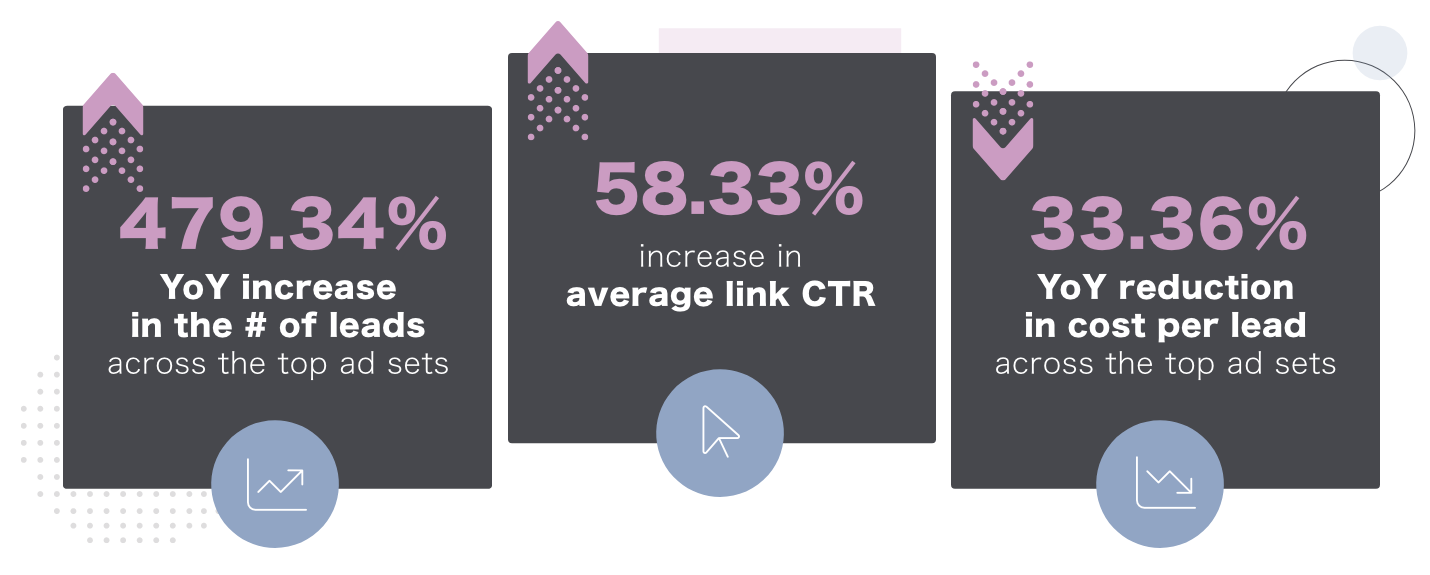
Project Details
Materialise Medical is a pioneer in applying advanced 3D printing technologies in the medical field. Through open and flexible platforms of software and services, they enable researchers, engineers, surgeons, and clinicians to revolutionize innovative personalized treatment worldwide.
We spent an extensive period of time analyzing the client’s website and core offer (3D printing software) as well as the personas and key decision makers in target audiences (healthcare professionals, hospitals, and medical device companies) in order to develop a tailored digital lead generation strategy for Materialise Medical.
Platforms we decided to leverage include:
- Meta ads (both on-Facebook and website lead generation).
- Google search ads.
- Google display ads.
- Twitter ads.
This integrated, omnichannel approach with always-on type of campaigns, allowed us to build lasting brand awareness, increase website traffic, and boost the number of qualified leads and ‘hot responses’ by creating multiple touchpoints and retargeting angles that converted the key decision makers.
Ensuring Quality & Quantity of Leads Through Meta Ads
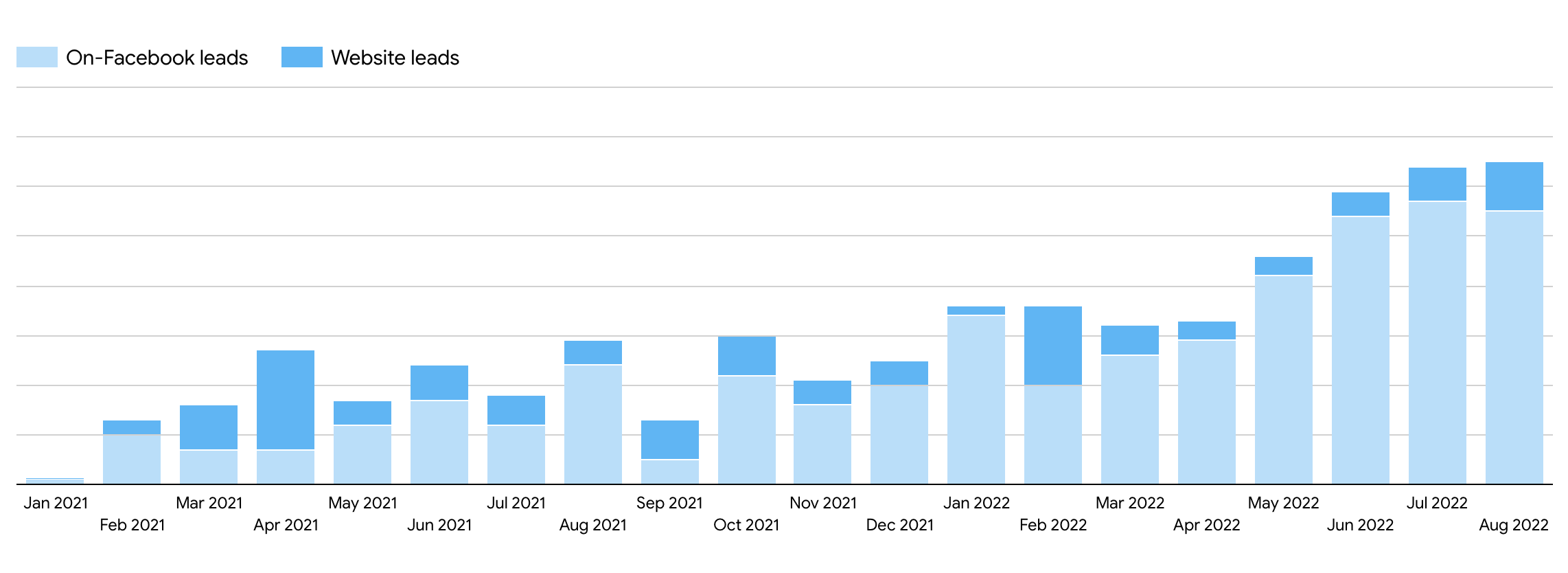
*On-Facebook and website leads generated by Meta ads increasing through the project.
Meta lead generation ads were the cornerstone of our strategy. Those campaigns on Facebook and Instagram yielded by far the highest number of qualified leads both on Meta apps as well as on the Materialise Medical website.
Meta lead ads show an easy-to-fill-out form right within the Facebook or Instagram app, auto-populate it with user information, and enable them to access the lead magnet download right there with one click. To fully leverage this function we have:
- Extracted from the client multiple, high-value lead magnets to entice the leads.
- Ensured the forms were short, to the point, and easy to view on mobile devices.
- Promised the strong value of lead magnet upfront (both in ad copy and the form itself) to reduce drop-offs.
- Integrated the form with Materialise Medical’s CRM for quick follow-up and automated lead nurturing.
- Enabled quick and easy download of the promised lead magnet (which included a variety of webinars, whitepapers, and even free trials of the software).

*Substantial year-on-year growth in the number of leads generated through Meta ads.
We tested a full suite of Meta ad targeting strategies:
- custom audiences (social media engagement users, website and specific page visitors, newsletter lists, past customer lists)
- lookalikes audiences built around the above
- video view audiences (building mini-funnels by retargeting users that viewed a certain % of our ad video)
- interests audiences including:
- Orthopaedics
- Cranio-maxillofacial
- Cardiovascular
- Radiology
By matching each audience with a dedicated creative approach and testing, as well as gradually removing the underperforming ad sets, we were able to increase the number of generated leads by +479.34% year-on-year across our top ad sets (up to 1,388.24% on the top performing ad set!).

*Huge year-on-year drops in cost per lead achieved through Humble Bunny optimizations.
Across the top ad sets that generated the most impressions, clicks, and leads, we were able to reduce the year-on-year average cost per lead by -33.36% (some ad sets achieving leads cheaper by as much as -63.76%!). With CBO (campaign budget optimizations) those ad sets were naturally prioritized by Meta, which ensured the most efficient use of the client’s ad spend across the entire ad account.
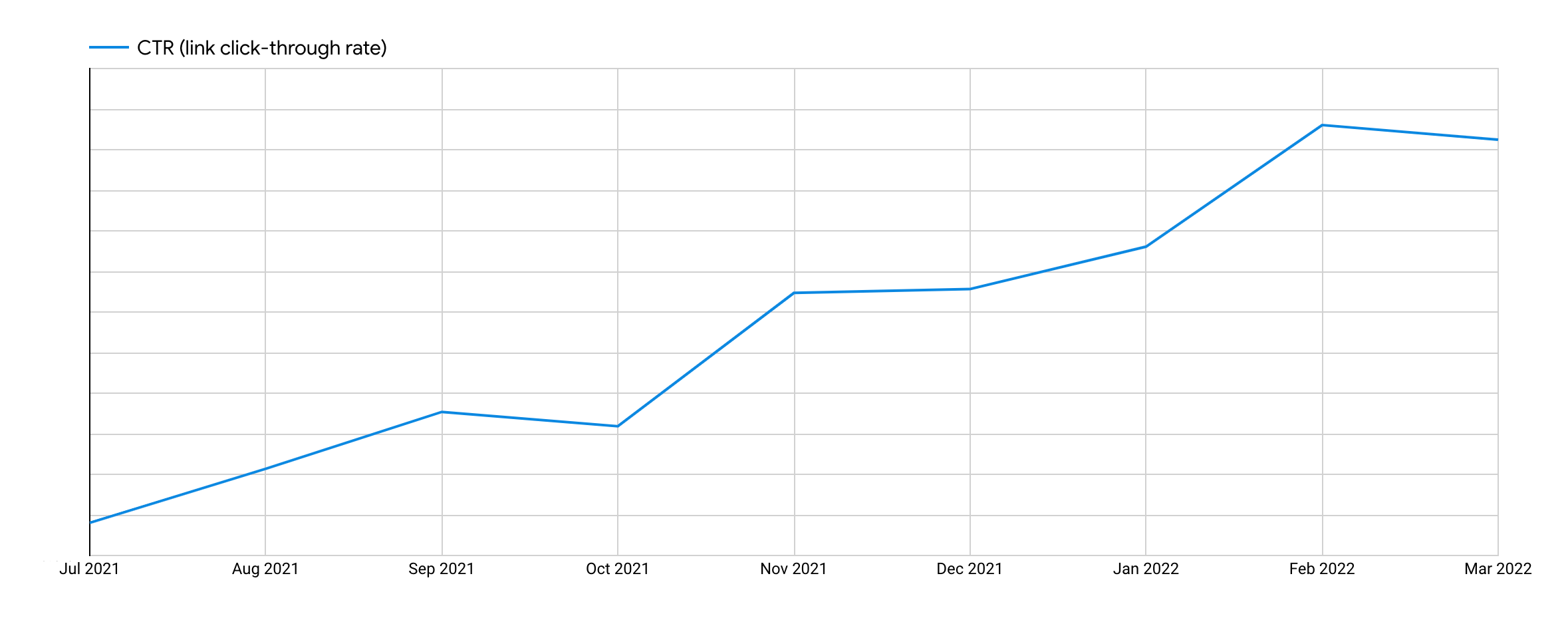
*Ongoing increase in link CTR attrbuted to relentless ad A/B testing and creative optimizations.
We increased the link click-through rate by +58.33% over the course of 9 months of the project.
This was possible due to:
- A/B testing of the image creatives and selecting the strong visuals that stopped the user’s scroll on Facebook or Instagram
- nurturing the interest by providing strong lead magnet hooks in the ad copy (in the form of short bullet points)
- testing the placement and targeting strategies, continuously pausing the underperforming ad sets
Omnichannel Approach With Twitter & Google Ads
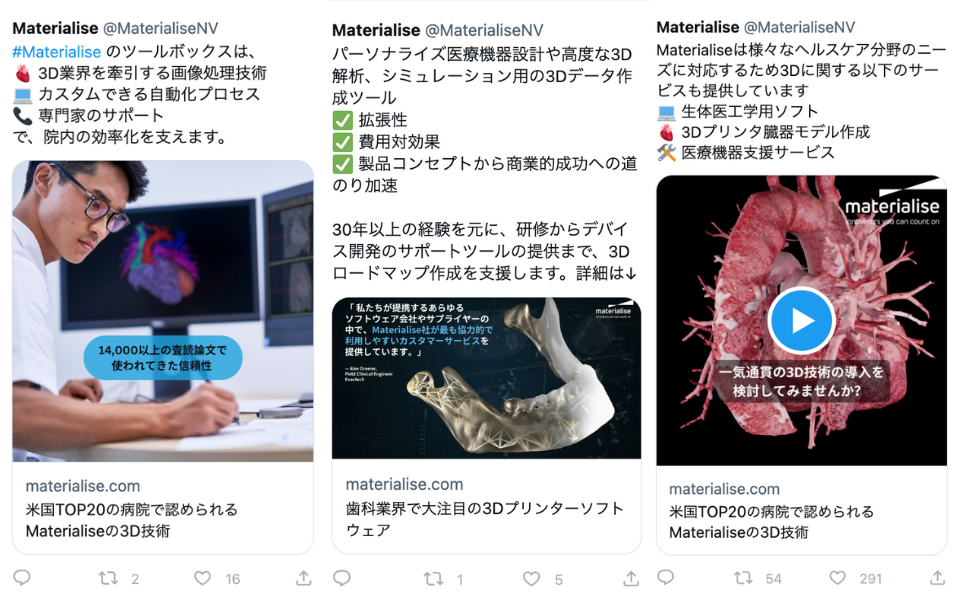
*Examples of image and video Twitter ads created by Humble Bunny.
Japan is Twitter’s second-largest market after the US with a wide variety of audiences, including businesses and politicians, as well as older demographic groups. This made it an excellent platform for building awareness and creating additional touchpoints for the Materialise Medical brand among a narrow niche of medical B2B decision-makers.
We have fully leveraged the Twitter ad targeting technology to our advantage by tapping into:
- Custom retargeting audiences.
- Carefully curated lookalike audiences built on the lists of followers or specific Twitter accounts (hand-picked).
- Broader interest audiences.
On Twitter, while keeping our ads short and to the point, we have continuously tested a plethora of creatives, including both images and videos. We also made sure to spread the learnings and tests between both Meta and Twitter, as some of the messaging angles worked well across both platforms.
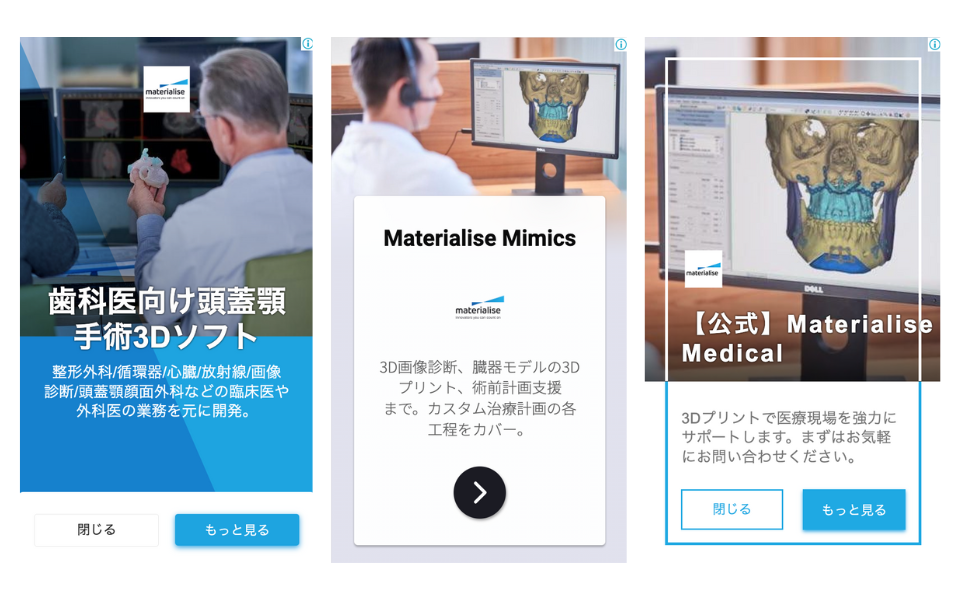
*Google retargeting display ads, dynamically generated based on our ad copy and provided images.
On Google, we broke the strategy into several key pieces:
- Dynamic Search Ads (DSA) for continuous keyword idea mining, and covering the blind spots of the manual keyword targeting campaign.
- Branded exact match keyword targeting campaign for capturing and converting the generated interest in Materialise Medical brand.
- Retargeting with Google Display ads for an additional visual touchpoint and remarketing to users in a consideration stage.
This allowed us to show ads on top of search results, which in some cases would be really challenging with just SEO. On top of that, we achieved great synergy with our social ads on Meta and Twitter, as the interest generated by those ads was then captured by Google search ads.
Here are the numbers yielded by the above strategy for branded ads:
- 36%+ average CTR increase M-o-M
- +25% average clicks increase M-o-M
- 67.78% increase in branded search impression share
as well as the non-branded advertising (compared to the B2B industry average):
- 240%+ cheaper average CPC
- 58%+ higher average CTR
We Leave No Stone Unturned
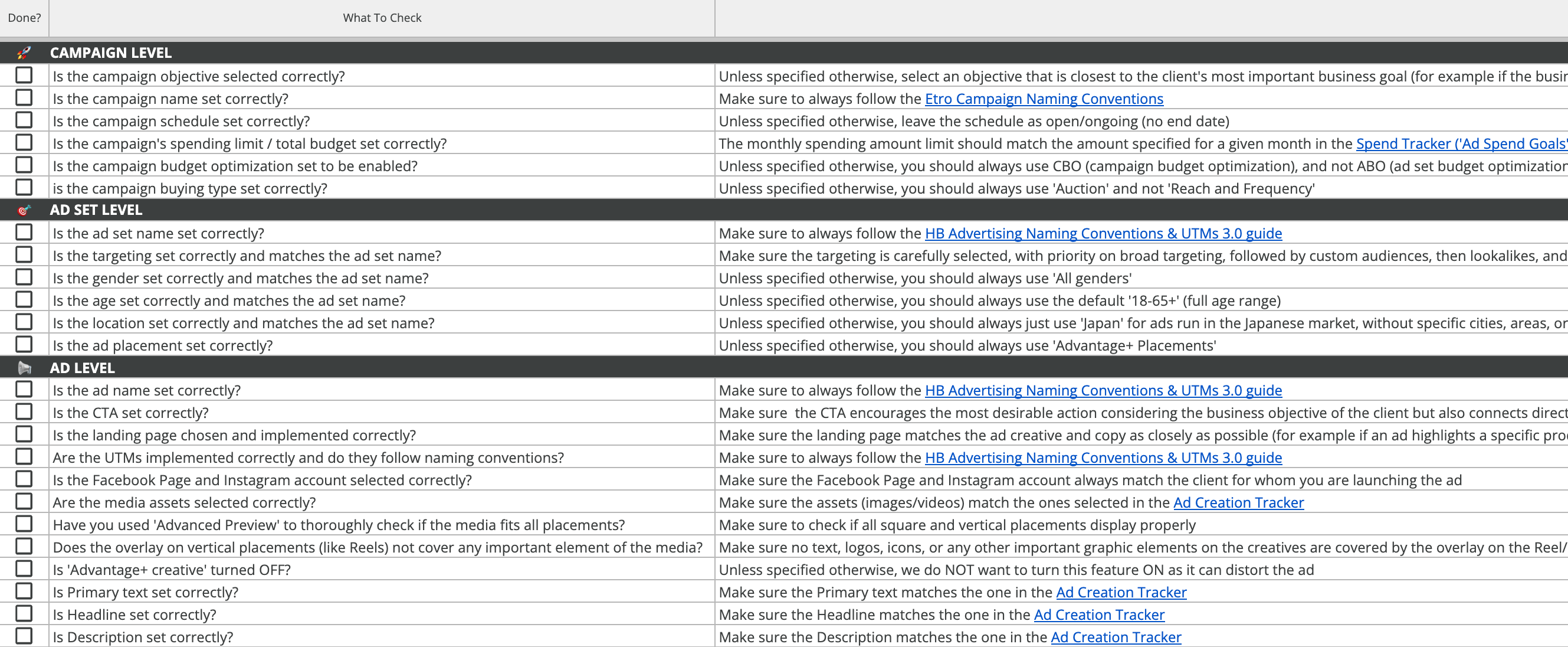
*Humble Bunny internal social ads checklist, ensuring the quality of our work.
To ensure repeatable and predictable results for Materialise Medical and our other lead-gen clients, we went to great lengths in order to develop a ‘turnkey process’, SOPs, and checklists that guided us to success.
Some examples include:
- extensive naming conventions that enable quick and easy testing, data analysis, and quick understanding of the campaign, ad set, and ad names by anyone working on the ad account
- social advertising checklist (example above) to guide the campaign, ad set, and ad creation process
- ad creation trackers for developing, checking, and organizing the ad copy and creatives
- … and more!
Beyond that, our team remained curious and actively researched new lead-gen and B2B marketing practices, studying various sources including David Ogilvy’s “Ogilvy on Advertising”.
Here are some of the learnings we always try to apply to our projects:
| #1 | An ad can rarely close a sale itself. Its function is to pave the way for the sales team, by attracting leads. |
| #2 | Make a promise in the ad specific (B2B decision-makers don’t have time). |
| #3 | Use percentages, time elapsed, and money saved. |
| #4 | Use testimonials from experts and recognizable companies. |
| #5 | Demonstrations are especially effective when they compare your product with competitors and can be easily replicated by the ad reader (so they can try it out for themselves). |
| #6 | News types of ads tend to work well if proclaimed loud and clear. |
| #7 | Show how B2B decision-makers can easily calculate how much they will save by using your service. |
| #8 | Share helpful information that users can use in their daily jobs. |
| #9 | Keep it simple, but differentiate. |
| #10 | Don’t be afraid to use a long copy if needed (if the service/product is complex). |
| #11 | Most leads will come from users with clear service applications already in mind (reflect that in the ad!). |
| #12 | Analyze the lead and their quality (what tangible results are you getting from advertising?). |
| #13 | Survey a sample of inquiries (relate them to specific ads they saw) and question the sales team. |
| #14 | Many businesses require approval from top management. Those decision-makers are mostly interested in cost and time savings (focus on broad benefits to convince them!). |